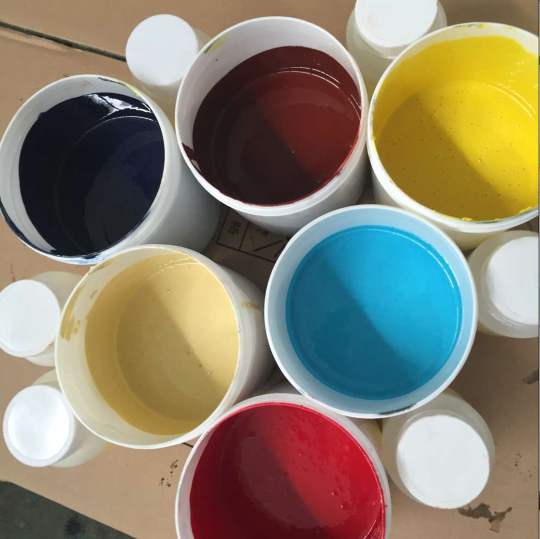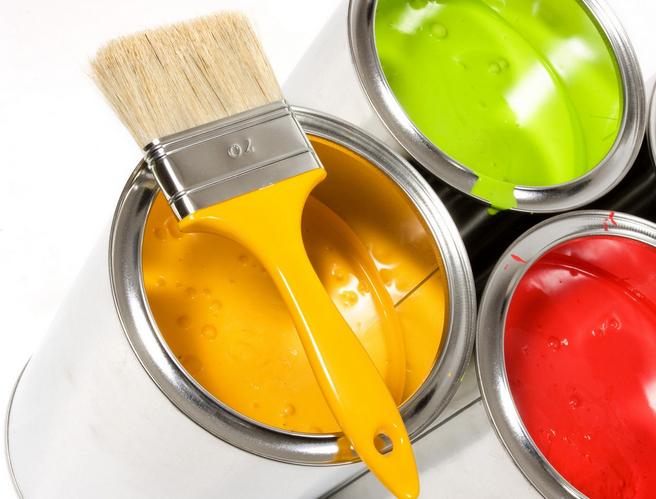Coating dispersants refer to additives that can enhance and improve the dispersion properties of solid or liquid materials. When grinding solid coatings, a dispersant is added to help crush the particles and prevent the agglomeration of the crushed particles to keep the dispersion stable. Oily liquids that are insoluble in water can be dispersed into very small droplets under high shear stirring. After stopping stirring, they will quickly stratify under the action of interfacial tension. After adding a dispersant and stirring, a stable droplet can be formed. emulsion. Its main function is to reduce the interfacial tension between liquid-liquid and solid-liquid.

Among the components of water-based coatings, there are film-forming substances, solvents (water), pigments, fillers, and additives. Among them, additives account for the smallest proportion in coatings, but they are also an important part and cannot be ignored.
Most of the pigments used in water-based coatings are mixed in the form of aggregates and agglomerates. If these particles cannot be dispersed into smaller particles or primary particles and form a stable dispersion, defects such as coarsening, flocculation, precipitation, floating color, and reduced tinting strength will occur.
Water-based coating additives-dispersants, their main functions are to reduce the time and energy required to complete the dispersion process, stabilize the dispersed pigment dispersion, and modify pigment particles Surface properties that adjust the mobility of pigment particles.
The dispersants used in water-based coatings must be water-soluble, and they are selectively adsorbed to the interface between the powder and water. Water-based industrial coatings are very different from ordinary architectural coatings. The viscosity is generally low. The viscosity is measured with a Tu-4 cup, which is generally 60-120 seconds. Therefore, the requirements for water-based industrial coatings on dispersants include good dispersion properties. It is sticky and needs to have good anti-settling properties.

The quality of coating slurry dispersion is not only related to the formulation of the material formula and the selection of raw materials, but also related to the dispersant. Therefore, in the paint production process, pigment dispersion is a very important production link, which is directly related to the storage, construction, appearance and performance of the paint film.
So the reasonable selection of dispersants is a very important production link. The types of dispersants include anionic, cationic, nonionic, amphoteric and polymeric.
Most dispersants achieve the purpose of dispersing pigments and fillers through the processes of wetting, grinding and dispersing, coupling and wrapping stability.
In water-based coatings, due to cost control reasons, more expensive dispersants cannot be used. Most of the wetting and dispersing agents currently used on the market are anionic and nonionic. Their principle is to use low surface tension to quickly wet the pigment particles, and then use high shear force, such as dispersers, grinding machines, etc., to form a semi-flocculated dispersion, or a controlled flocculation dispersion. If the viscosity of the paint is relatively high at this time, the pigment will not become coarse and serious flocculation will not occur. However, if the viscosity is not well controlled, problems will occur over time; some use coupling agents as dispersants. Their hydrophilic and sulfide groups couple two different substances together. The advantage of this is that it has good overall performance, can be dispersed, uses less amount, and can increase the adhesion of the paint. But the disadvantage is that it is not a deflocculating group, so it is not suitable for coatings with high requirements for color development. Through research and practice, it is recommended to use dispersants that can deflocculate in water-based coatings. The advantages of this are: good color development of pigments and fillers, high brightness and good gloss.

 微信扫一扫打赏
微信扫一扫打赏

